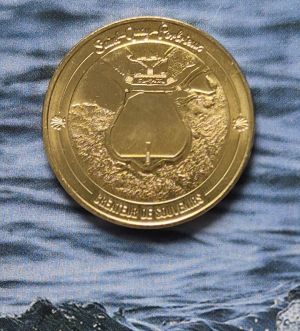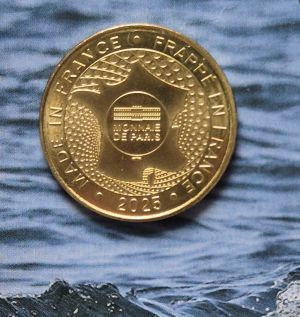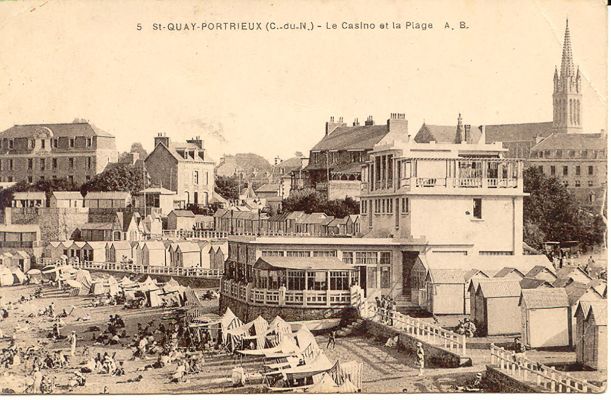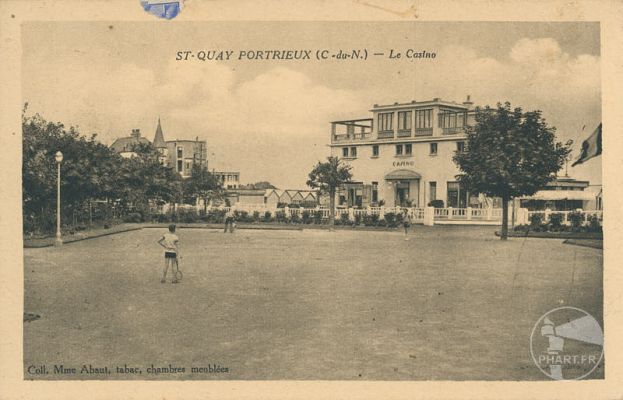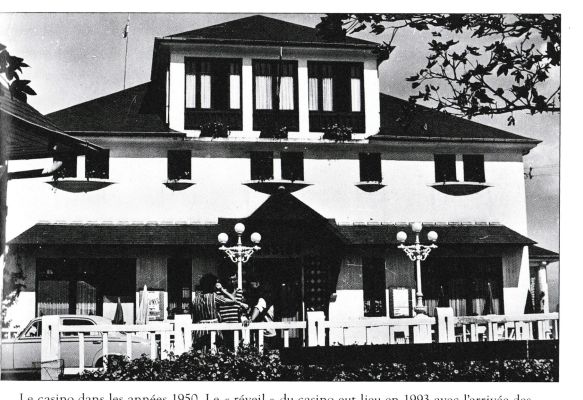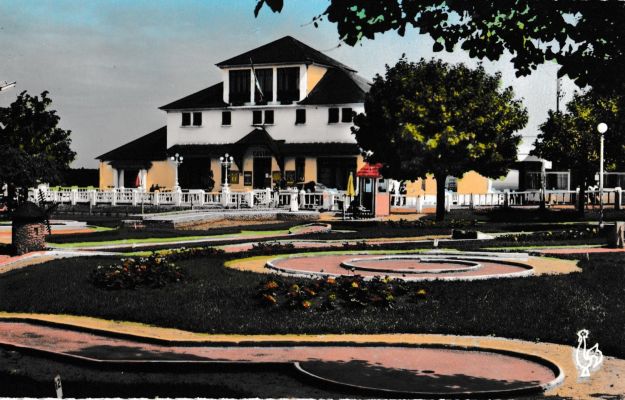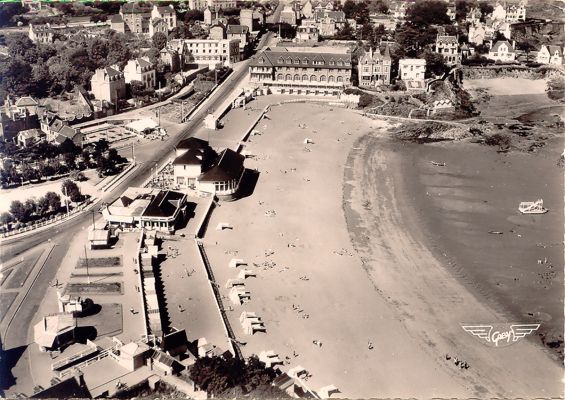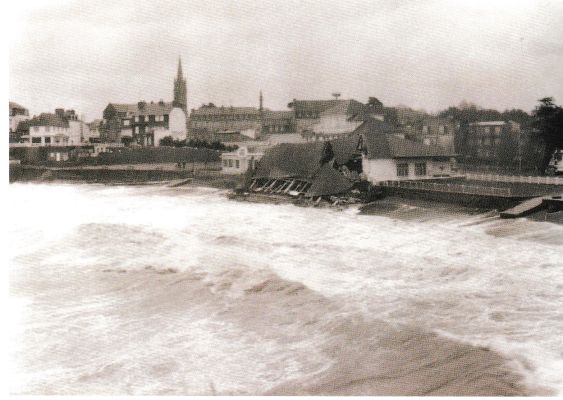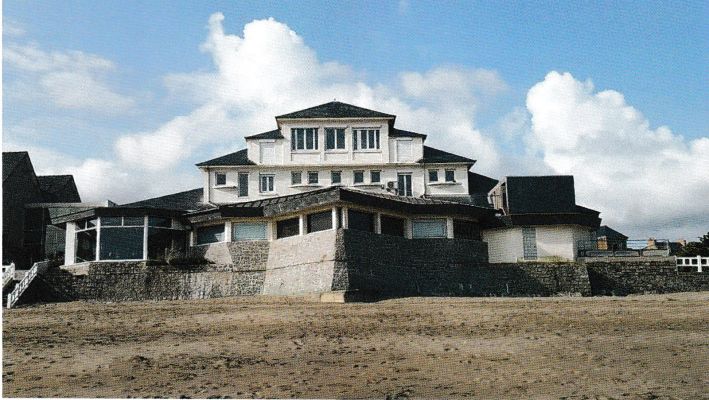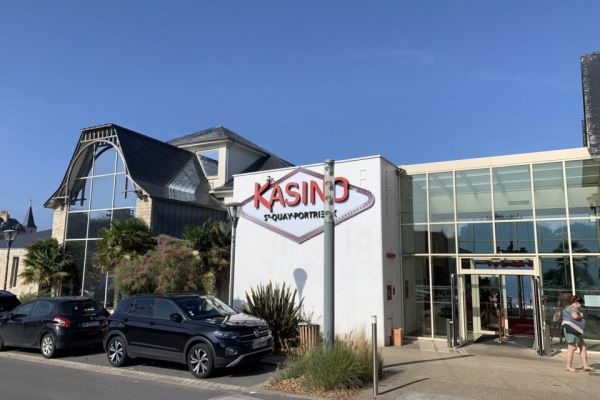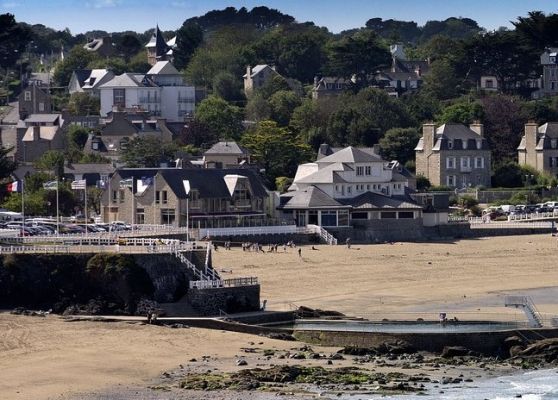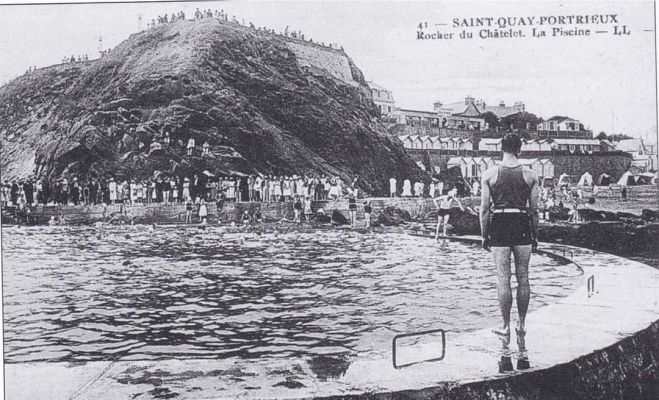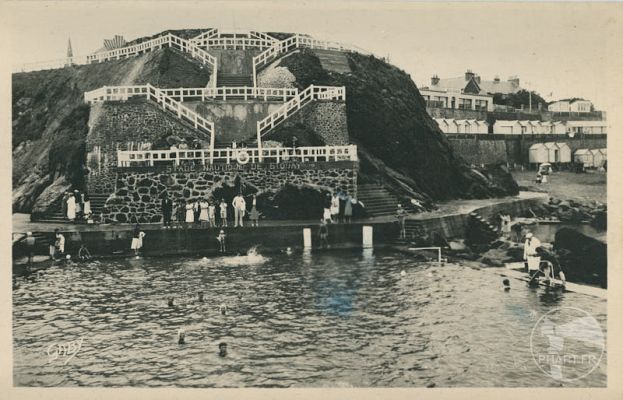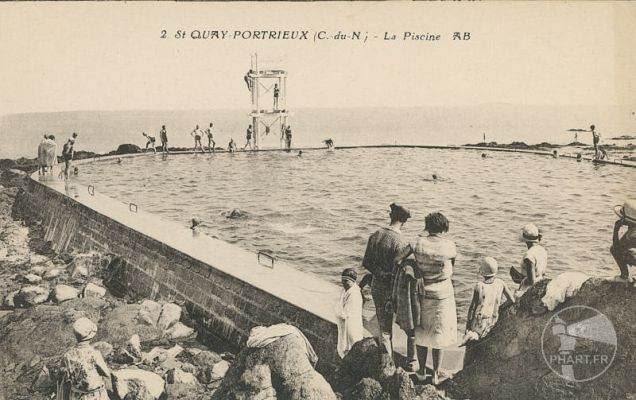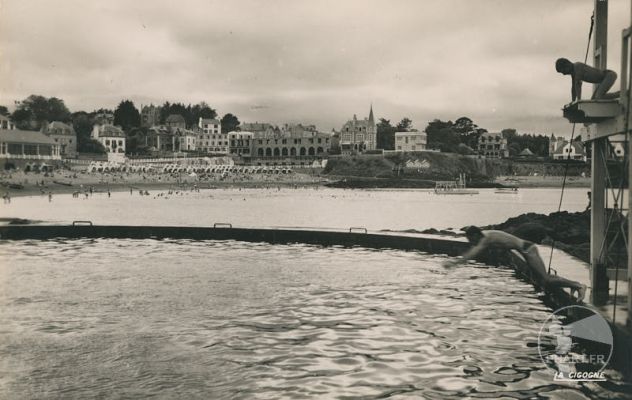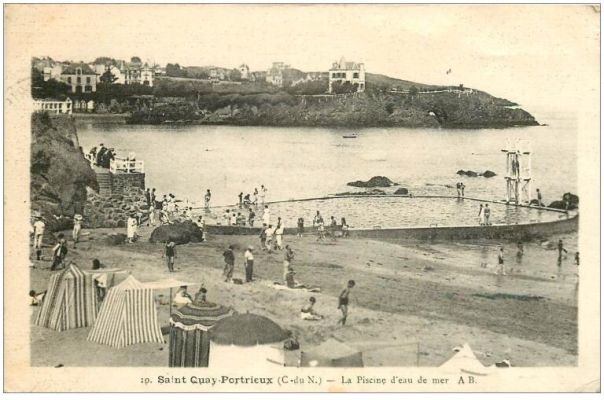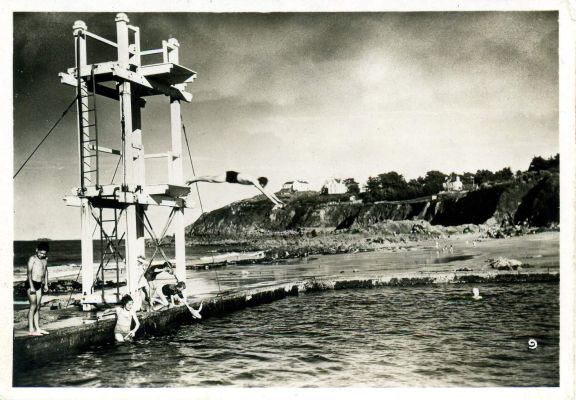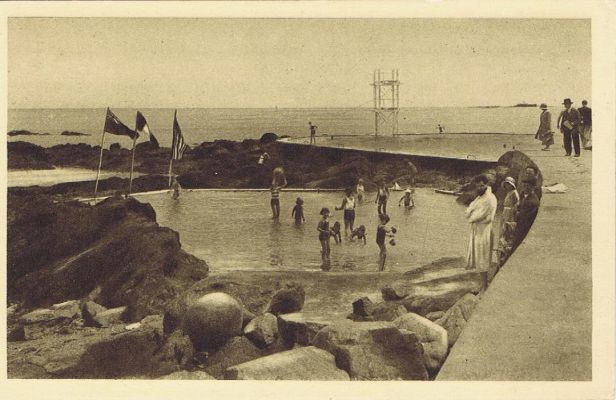CASINO AND SEAWATER POOL: THEIR DIFFERENT LIVES
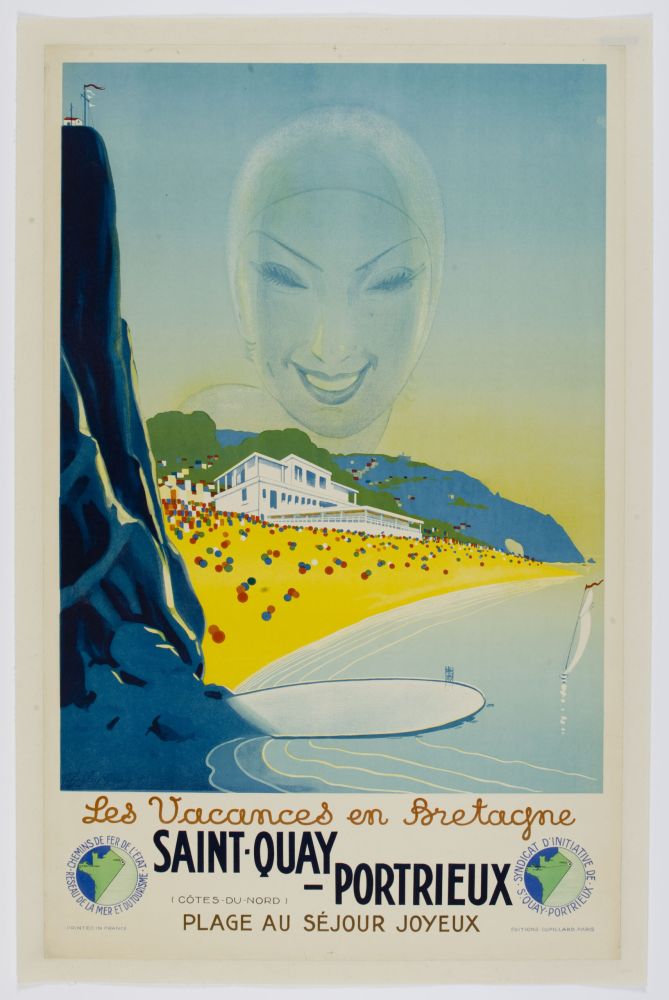
The Casino

A renowned seaside resort must have a casino, and this was one of Alfred Delpierre’s early plans. An original project, since it would combine gambling and partying with Brittany’s first thalassotherapy establishment.
Construction of the building that would become the casino began in 1929. The following year, it was completed and licensed for gaming.
In addition to the gaming rooms with boule, the bar and the dance halls with orchestra on the ground floor, the establishment offered a genuine thalassotherapy facility.
Upstairs, baths were arranged in several alcoves with heated seawater tubs, freshwater showers and massage tables.
Guests could then enjoy the services of a hairdressing salon on the first floor.
Overlooking the beach, the Casino was covered with terraces. The entire seafront façade was open-air, protected from the wind by glass windows, and featured an upscale tea room.
From June 15 to the end of September, there were daily aperitif dances from 11 a.m. to noon, tea dances from 5 to 7 p.m., and dancing in the evening.
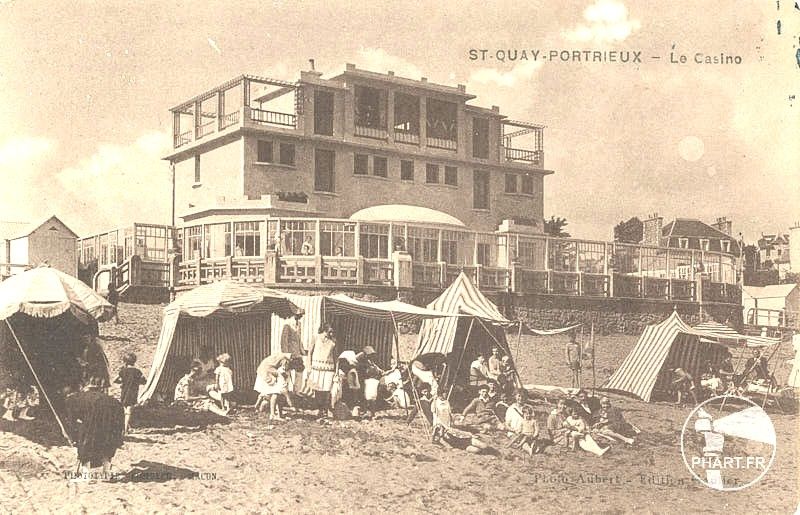


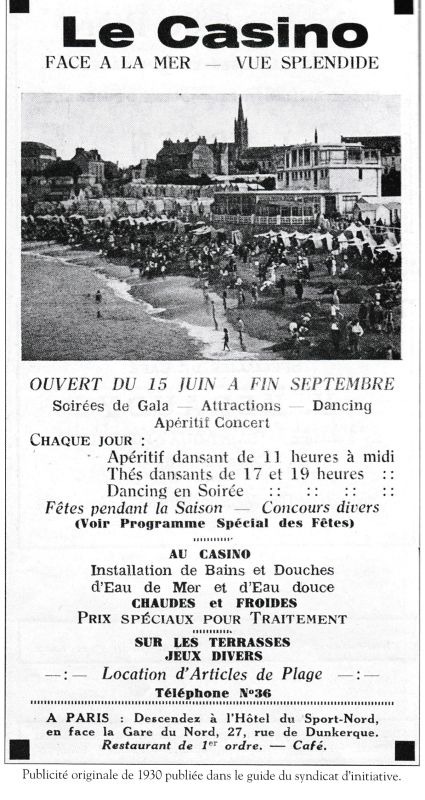
The original casino was enlarged by closing and covering the terraces at the end of the 1930s, and was subsequently modified several times, notably in the early 1950s when the roof was entirely changed, giving it a completely different appearance. The thalassotherapy facilities have now disappeared.
In 1978, a heavy storm caused the entire section overlooking the beach to collapse. It was rebuilt in the shape of a point, to create a breakwater effect.
The Casino’s most recent modifications date back to the 2000s. The acquisition of the adjoining Saint-Quay-Bar enabled considerable expansion and the creation of a restaurant area. Slot machines opened in 1993.
It’s under a new name, the Kasino, that you’re now looking at it. It is open all year round and hosts numerous musical and cultural events.
The seawater pool
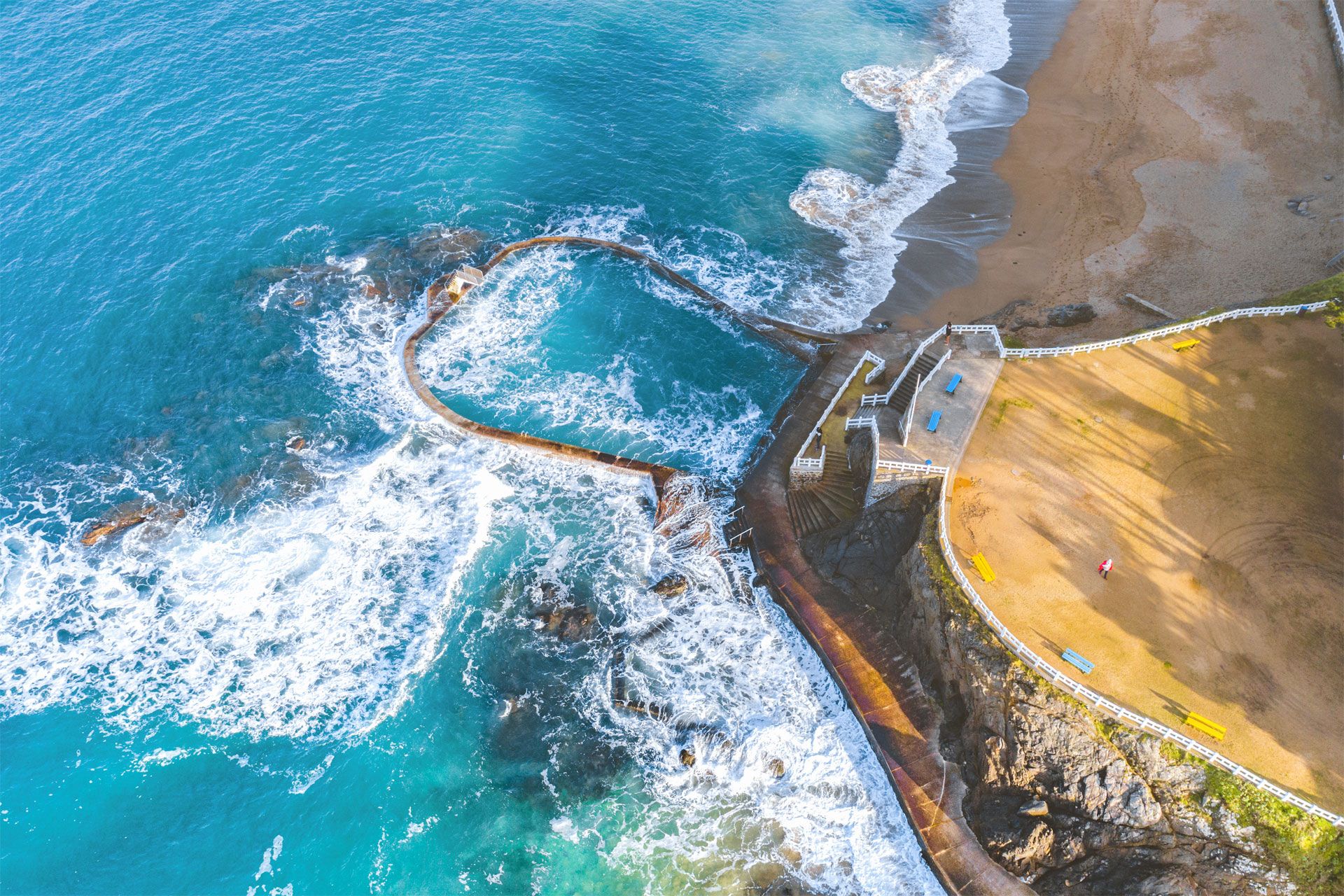
A rocky point separates the Saint-Quay beach from the Châtelet beach. At the same time as the development of the beachfront and the installation of bars and stores along the promenade, the bold idea arose to use this point to create a “seawater pool”. The situation was propitious: thanks to the amplitude of the tides, the water could be renewed at every major tide, and the pool would offer summer visitors a particularly original and spectacular swimming pool, overlooked by a large terreplein.
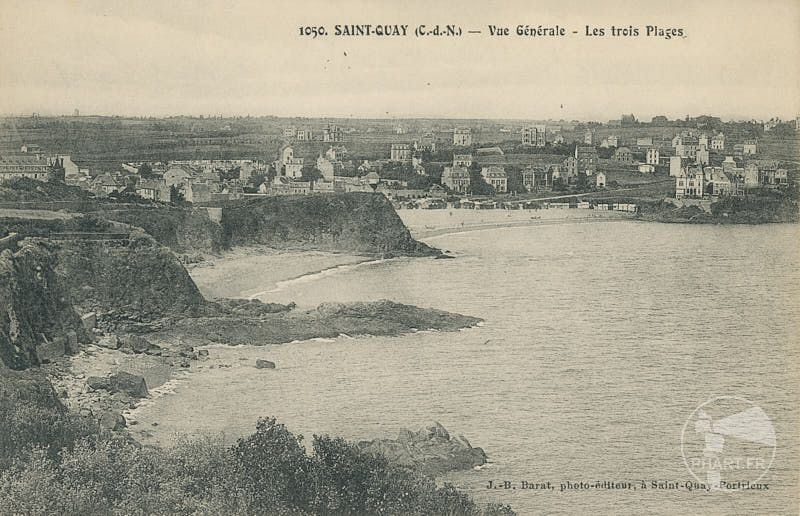
Extensive work began in 1929 to level part of the rocky point and build the swimming pool and monumental staircase. The following year, the “nautical stadium” was inaugurated. The pool is “almost Olympic” in size, measuring 33.33 m in length, and features a two-story wooden diving board that allows athletes to perform spectacular tricks. Competitions are held regularly.
Next door was a small children’s pool, built the following year.
In 1933, Saint-Quay-Portrieux was the only commune in the département to have a swimming pool and to offer swimming lessons to schoolchildren, given by instructors…but in fresh water, some of you may still remember!
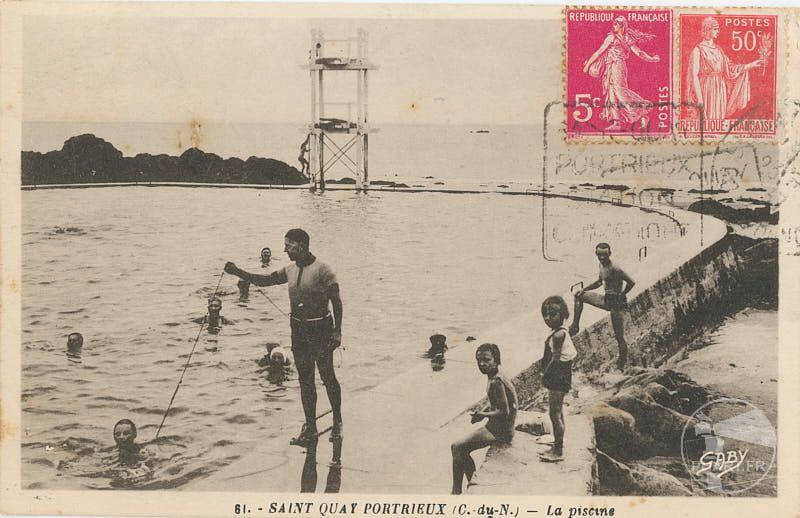
Today, the pool remains unchanged, with only a few railings installed around its perimeter.
In the early ’60s, safety standards changed, and the original diving board had to be replaced by the current concrete one, which, overlooking the original pool, is now one of the emblems of Saint-Quay-Portrieux.

In 2021, Motion Palace Production shot a film commissioned by France 5 to be used as an advertising jingle.
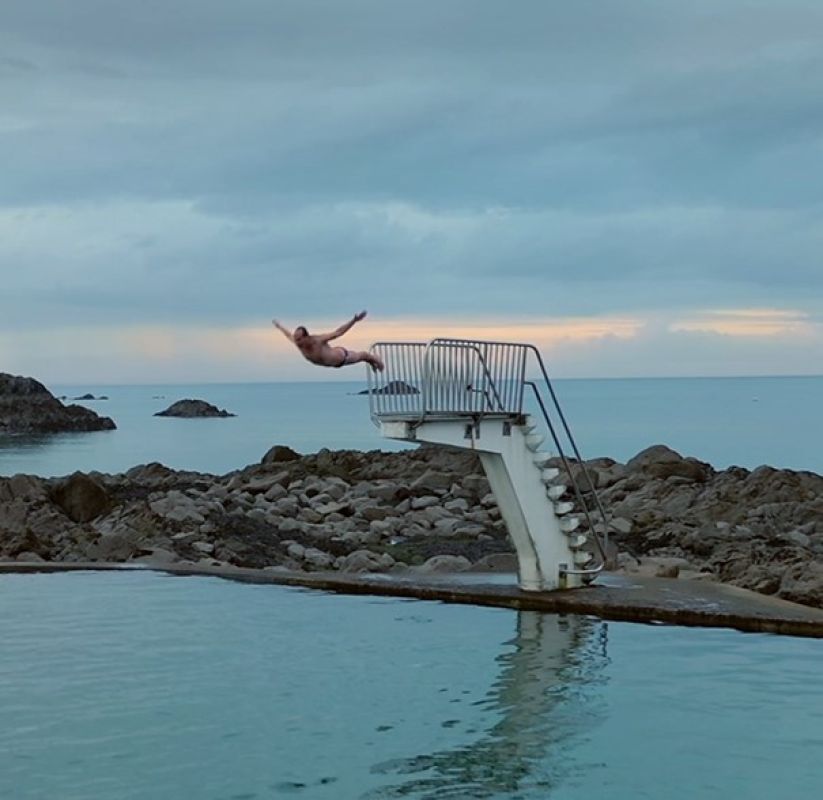
The Saint-Quay-Portrieux swimming pool is internationally renowned! An article in the August 2023 issue of “The Guardian” considers it to be one of the 10 most beautiful seawater pools in Europe…

Une médaille du souvenir représentant la piscine d’eau de mer de Saint-Quay-Portrieux a été frappée par la monnaie de Paris en juillet 2025. Elle est disponible à l’Office de Tourisme.
